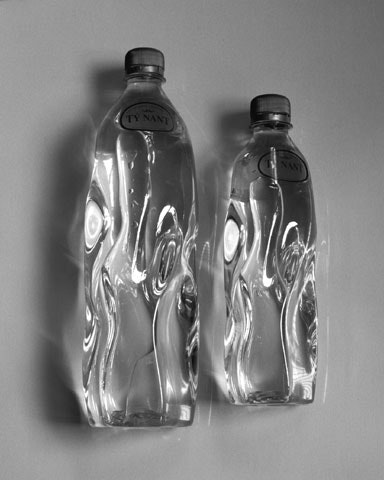In retrospect,
Bi-Fixe reads like a prototype for investigations by the artist that have subsequently led him into experimenting with object design. Taking his cue – or so it would appear – from the photographic origin of Ty Nant’s PET bottles, Moulène has devised several objects that not only resort to computer design but that clearly manifest, like the Ty Nant bottles, the fact they originate in a two-dimensional design that has been translated into three dimensions (rather than conceived and constructed in volume). His
Histocamembert (2004) is a case in point, an object reminiscent of a pie chart blown up and translated into volume. No doubt the most conspicuous of these objects is
Body (2011), an irregular bean pod-like shape some 8.5 meters long that Moulène produced in collaboration with the car manufacturer Renault. Similarly to his photographic rendering of the Ty Nant bottles,
Body reads counter-intuitively: it exhibits color variations and dividing lines that bear, in fact, no relation to its actual shape, it is seemingly translucent yet opaque, and it is industrially produced but as useless as an object made by a
3D printer. Yet it is in fact anything but an object made by a 3D printer, a technology that directly implements the translation of images into simple objects.
Body is a visual conundrum that evokes the two-dimensional, “photographic” quality of designed objects translated into volume by confusing the relationship between object and photograph. It is not unlike the glazed wickerwork pattern drawn on potteries traditionally, yet no longer encased in basketry, but messed up: a computer-generated design that takes us back to a photographic experience of the world and invites us, in turn, to look at photographs less as pictures of things than as objects that address the conditions of their making.

